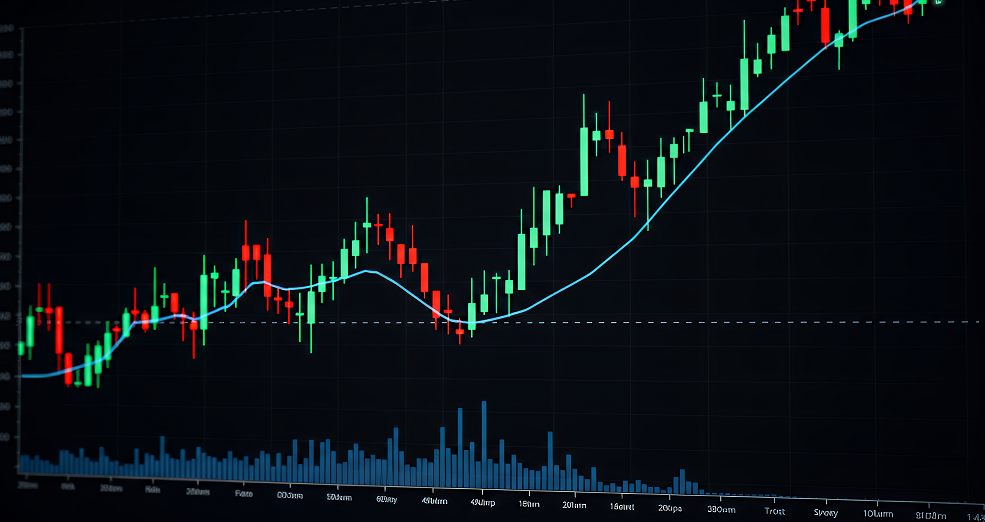IC Markets Asia Fundamental Forecast | 4 August 2025
What happened in the U.S session?
Tariff escalations dominated U.S. session moves, especially for equities, commodities (copper), and FX. Major tech and commodity names experienced pronounced volatility around earnings news and trade policy changes. Growth and inflation trended in the right direction, but labor market data and weak capex underscored unease.
A cautious outlook persists, with traders focused on ongoing trade negotiations, the remainder of Q2 earnings, and forthcoming Fed signals as macro risk remains elevated. The Federal Reserve adopted a cautious “wait-and-see” posture after holding rates last week. Chairman Powell cited increased uncertainty from tariffs as justification for keeping policy unchanged for now, resisting pressure from President Trump for more aggressive cuts.
What does it mean for the Asia sessions?
Asian traders should brace for a defensive session Monday, with tariff fallout, U.S. market weakness, and upcoming macro data likely to dominate price action in both equities and currencies, particularly among export- and tech-sensitive markets. Risk-Off Mood: Trade/tariff headlines and Wall Street’s lead favor profit-taking and defensive positioning across Asia. Watch for large moves in cyclicals, exporters, and high-beta names. Currency Reactions: The yen (JPY) may be especially volatile, tech-exposed currencies (KRW, TWD) could sink, and the AUD/NZD remain sensitive to global risk appetite and softening data.
The Dollar Index (DXY)
Key news events today
No major news event
What can we expect from DXY today?
The US dollar enters the new week on the back of its strongest month in 2025, with the landscape dominated by trade policy shifts, robust (but cooling) economic data, and cautious Federal Reserve guidance as inflation and labor market uncertainties persist. New executive orders and ongoing US-China negotiations could cause further swings in the dollar, especially among trade-sensitive currency pairs. Traders are monitoring for fresh US data, including services PMI and any forward guidance from Fed officials. Market outlook hinges on whether the DXY can hold above key support near 99; failure could trigger a deeper correction.
Central Bank Notes:
- The Board of Governors of the Federal Reserve System voted unanimously to maintain the Federal Funds Rate in a target range of 4.25% to 4.50% at its meeting on July 29–30, 2025, keeping policy unchanged for the fifth consecutive meeting.
- The Committee reiterated its objective of achieving maximum employment and inflation at the rate of 2% over the longer run. While uncertainty around the economic outlook has diminished since earlier in the year, the Committee notes that challenges remain and continued vigilance is warranted.
- Policymakers remain highly attentive to risks on both sides of their dual mandate. The unemployment rate remains low, near 4.2%–4.5%, and labor market conditions are described as solid. However, inflation is still somewhat elevated, with the PCE price index at 2.6% and core inflation forecast at 3.1% for year-end 2025, up from earlier projections; tariff-related pressures are cited as a contributing factor.
- The Committee acknowledged that recent economic activity has expanded at a solid pace, with second-quarter annualized growth estimates near 2.4%. However, GDP growth for 2025 has been revised downward to 1.4% (from 1.7% projected in March), reflecting expectations of a slowdown in the coming quarters.
- In the revised Summary of Economic Projections, the unemployment rate is expected to average 4.5% in 2025, and headline PCE inflation is forecast at 3.0% for the year, with core PCE at 3.1%. Policymakers continue to anticipate that inflation will moderate gradually, with ongoing risks from tariffs and global conditions.
- The Committee reaffirmed its data-dependent and risk-aware approach to future policy decisions. Officials stated they are prepared to adjust the stance of monetary policy as appropriate if risks emerge that could impede progress toward the Fed’s goals.
- As previously outlined, the Committee continues the measured run-off of its securities holdings. The pace of balance sheet reduction, which slowed since April (monthly redemption cap on Treasury securities reduced from $25B to $5B, while holding agency MBS cap steady at $35B), was left unchanged this month to support orderly market functioning and financial conditions.
- The next meeting is scheduled for 16 to 17 September 2025.
Next 24 Hours Bias
Strong Bullish
Gold (XAU)
Key news events today
No major news event
What can we expect from Gold today?
Spot gold prices rose nearly 2% to surpass $3,350 per ounce on Friday, as the latest US jobs report added to evidence of a cooling labor market and strengthened expectations of a Federal Reserve rate cut in September. The US economy added just 73,000 jobs in July, falling short of the 100,000 projected by analysts, while May and June’s job numbers were also revised sharply lower.
In response, markets are now pricing in a 75% probability of a September rate cut—up sharply from 45% before the report. The data followed stronger-than-expected PCE inflation figures released on Thursday, which highlighted persistent price pressures and further complicated the Fed’s policy outlook.
Next 24 Hours Bias
Weak Bearish
The Australian Dollar (AUD)
Key news events today
No major news event
What can we expect from AUD today?
Further confirmation of a policy shift (rate cut) could pressure the AUD further. Continued weakness in metals and agricultural exports will drive the terms of trade and the currency’s performance. Moves in the U.S. dollar, especially following global macro releases, will remain pivotal for AUD/USD direction over the coming days. Overall, Australian Dollar traders face a quieter session start with the currency under moderate pressure, shaped by trade policy reprieves and cautious domestic data, but with a bearish bias prevailing due to global headwinds and expected further RBA policy easing.
Central Bank Notes:
- The RBA held its cash rate steady at 3.85% at the July meeting on 8 July 2025, following a 25bps reduction in May and in line with widespread market expectations after recent data showed inflation tracking within the target band.
- Inflation continues to ease from its peak, with higher interest rates helping to rebalance demand and supply across the Australian economy. Data for the June quarter signaled ongoing progress, though underlying pressures persist in certain sectors.
- Trimmed mean inflation for the June quarter likely remained near 2.9% and headline CPI around 2.4%, both within the RBA’s 2–3% target range. The Board noted further evidence of inflation convergence, but flagged that not all price categories are moving in tandem.
- Financial markets have shown increased volatility in the wake of global tariff and trade policy developments—especially as a result of recent U.S. and EU announcements. This has pushed asset prices higher but contributed to an uncertain outlook for domestic growth and employment.
- Private domestic demand showed a tentative recovery. Real household incomes improved and signs of easing household financial stress emerged, but some business sectors continued to face subdued demand, limiting their ability to pass on cost increases.
- Labour market conditions remained tight overall. Employment continued to expand, with low rates of underutilization. Business surveys suggest labour availability remains a constraint, though there are signs of a gradual easing compared to earlier in 2025.
- Underlying wage growth softened modestly, though unit labour cost growth remains elevated due to below-trend productivity gains. The Board remains attentive to developments in wage and productivity dynamics as cost pressures continue to evolve.
- Uncertainties persist for both domestic activity and inflation. Consumption growth has risen, but more slowly than anticipated three months ago, with global and domestic factors both contributing to the cautious outlook.
- There remains a risk that household spending picks up more slowly than forecast, which could result in ongoing subdued aggregate demand and a sharper deterioration in employment conditions.
- Given that inflation is expected to remain around the target band, the Board judged that it was appropriate to keep policy settings unchanged in July, maintaining a position that is still mildly restrictive.
- The Board continues to monitor all incoming data and assesses risks carefully, with a focus on global trends, domestic demand indicators, inflation outcomes, and the labour market outlook.
- The RBA remains committed to its mandate of price stability and full employment and stands ready to adjust policy as needed to achieve these objectives.
- The next meeting is on 11 to 12 August 2025.
Next 24 Hours Bias
Medium Bearish
The Kiwi Dollar (NZD)
Key news events today
No major news event
What can we expect from NZD today?
The currency remains vulnerable to further downside pressure unless global risk sentiment improves significantly or New Zealand-specific positive catalysts emerge. Traders should monitor any developments in U.S.-China trade talks and broader risk appetite indicators that could influence commodity-linked currencies like the NZD. The NZD faces a challenging start to the week with: Trade uncertainties from new U.S. tariffs weighing on sentimenRisk-off mood following weak U.S. equity performance over the weekend, and limited domestic data to provide near-term direction. Focus on global trade developments and potential policy responses
Central Bank Notes:
- The Monetary Policy Committee (MPC) agreed to hold the Official Cash Rate (OCR) at 3.25% on 9 July, marking the first pause following six consecutive rate cuts.
- The MPC cited heightened uncertainty and near-term inflation risks as reasons to wait until August for further action.
- Although the annual consumer price index inflation increased to 2.5% in the first quarter of 2025, it remained within the MPC’s target range of 1 to 3%, noting that the outlook for medium-term inflation pressures has evolved broadly in line with the May MPS projections.
- While it is expected to be near the upper end of the band in the second and third quarters of this year, easing core inflation and spare capacity in the economy should help return it toward the 2% midpoint over time.
- The MPC noted that, despite global factors, domestic financial conditions are evolving broadly as expected, as mortgage and deposit interest rates have continued to decline, reflecting a lower OCR, strong bank liquidity, and soft credit growth.
- In aggregate, GDP growth over the December and March quarters was stronger than expected, reflecting a pickup in household consumption and business investment. However, higher-frequency indicators suggest weaker-than-expected growth in April and May.
- Large economic policy shifts overseas and concerns about sovereign risk could result in additional financial market volatility and increased bond yields, while prolonged economic uncertainty might induce further precautionary behaviour by households and firms, slowing the domestic economic recovery.
- Subject to medium-term inflation pressures continuing to ease in line with the Committee’s central projections, the Committee expects to lower the OCR further, broadly consistent with the projection outlined in May.
- The next meeting is on 20 August 2025.
Next 24 Hours Bias
Medium Bearish
The Japanese Yen (JPY)
Key news events today
No major news event
What can we expect from JPY today?
The yen’s weakness reflects ultra-loose BOJ policy, trade tariff pressures, and broader risk-off sentiment as markets digest the implications of escalating global trade tensions. Traders should watch for any signs of government intervention rhetoric or actual market intervention as the currency approaches critical technical levels. Global risk sentiment remains fragile due to ongoing trade tensions. U.S. session developments could drive further volatility, particularly any new trade policy announcementsIntervention speculation grows stronger as the yen approaches the 155 level that analysts view as a potential trigger point
Central Bank Notes:
- The Policy Board of the Bank of Japan decided on 31 July, by a unanimous vote, to set the following guidelines for money market operations for the inter-meeting period:
- The Bank will encourage the uncollateralized overnight call rate to remain at around 0.5%.
- The BOJ will maintain its gradual reduction of monthly outright purchases of Japanese Government Bonds (JGBs). The scheduled amount of long-term government bond purchases will, in principle, continue to decrease by about ¥400 billion each quarter from January to March 2026, and by about ¥200 billion each quarter from April to June 2026 onward, targeting a purchase level near ¥2 trillion in January to March 2027.
- Japan’s economy is experiencing a moderate recovery overall, though some sectors remain sluggish. Overseas economies are generally growing moderately, but recent trade policies in major economies have introduced pockets of weakness. Exports and industrial production in Japan are essentially flat, with any uptick largely driven by front-loaded demand ahead of U.S. tariff increases.
- On the price front, the year-on-year rate of change in consumer prices (excluding fresh food) remains in the mid-3% range. This reflects continued wage pass-through, previous import cost surges, and further increases in food prices, particularly rice. Expectations for future inflation have begun to rise moderately.
- The effects of the earlier import price and food cost increases are expected to fade during the outlook period. There may be a temporary stagnation in core inflation as overall growth momentum softens.
- Looking forward, the economy is likely to see a slower growth pace in the near term as overseas economies feel the pinch of ongoing global trade policies, putting downward pressure on Japanese corporate profits. Accommodative financial conditions are expected to buffer these headwinds somewhat. In the medium term, as global growth recovers, Japan’s growth rate is also expected to improve.
- With renewed economic expansion, intensifying labor shortages, and a steady rise in medium- to long-term expected inflation rates, core inflation is projected to gradually pick up. By the latter half of the BOJ’s projection period, inflation is forecast to move in line with the 2% price stability target.
- There are multiple risks to the outlook, with especially elevated uncertainty regarding the future path of global trade policies and overseas price trends. The BOJ will continue to closely monitor their impact on financial and foreign exchange markets, as well as on Japan’s economy and inflation.
- The next meeting is scheduled for 17 to 18 September 2025.
Next 24 Hours Bias
Weak Bearish
Oil
Key news events today
No major news
What can we expect from Oil today?
The oil market enters the week with increased production commitments from OPEC+ but faces ongoing uncertainties from trade policy changes and geopolitical tensions that could affect both supply and demand dynamics.OPEC+ Confirms September Output Hike: The Organization of the Petroleum Exporting Countries and its allies agreed on Sunday to increase oil production by 547,000 barrels per day (bpd) starting September 2025. This marks the latest in a series of monthly production increases as the group continues unwinding voluntary cuts implemented during the pandemic.
Next 24 Hours Bias
Medium Bullish





